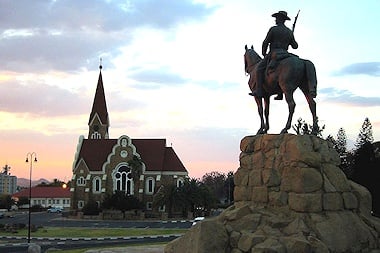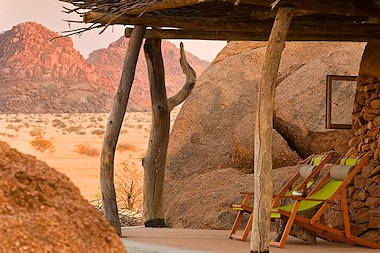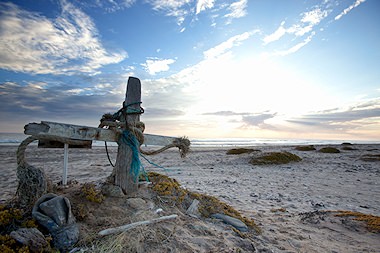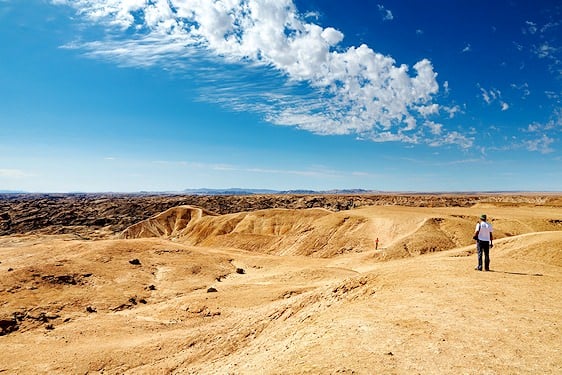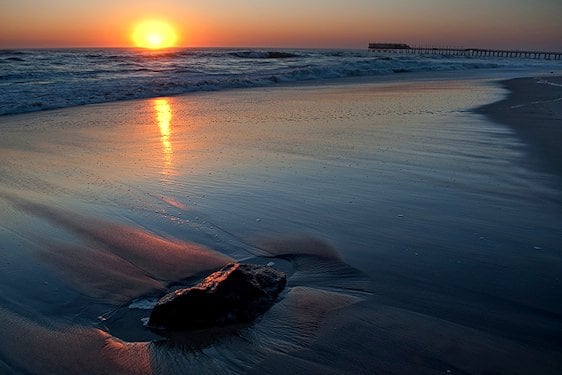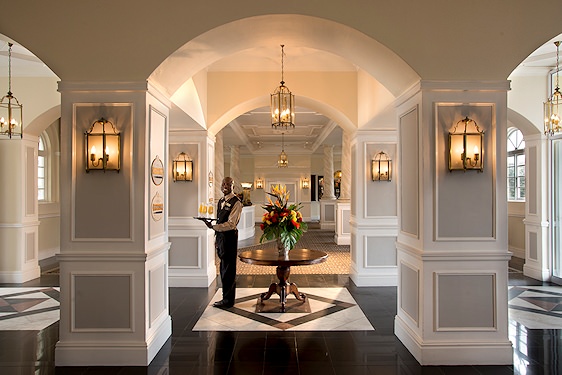Namibia's Swakopmund
Help Me Plan- Home
- >
- African Travel
- >
- Namibia
- >
- Swakopmund
Swakopmund Destination Guide
Swakopmund is Namibia’s classic seaside escape where the Namib Desert meets the Atlantic. Expect cool, foggy mornings, wide beaches, and German-era architecture alongside adrenaline-charged pursuits like sandboarding and quad biking. It’s also a convenient base for exploring Walvis Bay’s wetlands and Sandwich Harbour’s ocean-meeting dunes on guided 4×4 day trips.
Getting to Swakopmund
By Air: Visitors reach the area via Walvis Bay International Airport from Cape Town, Johannesburg, or via the Swakopmund airstrip through Windhoek. Most guests visit Swakopmund as part of a broader Namibian itinerary that includes additional destinations.
By Road: Swakopmund is approximately 50 km from Walvis Bay. The short coastal drive links the two towns, while longer routes offer expansive desert scenery. Guests travel in private, air-conditioned vehicles with experienced guides.
Weather & Best Time To Visit
Swakopmund lies on the Atlantic coast at the edge of the Namib Desert and enjoys a milder climate than inland areas. Coastal fog is frequent year-round. Typical temperatures are temperate, and the destination works well in any season.
The winter months often see more persistent morning fog that usually lifts by afternoon. Fog is a vital moisture source for the coastal ecosystem. Rainfall is very low (hyper-arid).
Top Attractions in Swakopmund
In this seemingly stark environment, leisure seekers will find many different activities—there’s something to suit most interests.
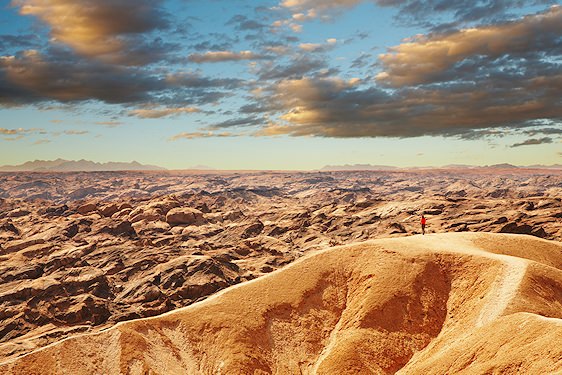
Welwitschia Drive
The Welwitschia self-drive route explores unique desert life, notably the ancient Welwitschia mirabilis and extensive lichen fields. Numbered beacons guide a four-hour loop across the plains near the Kuiseb River.
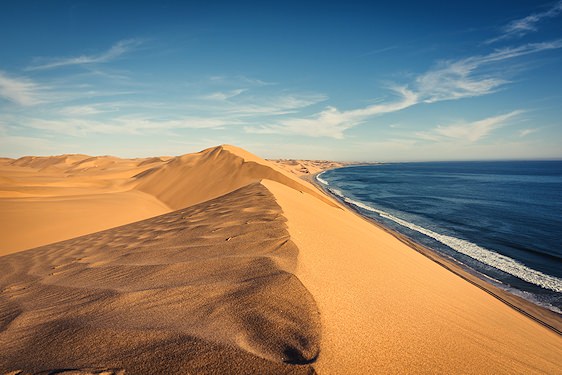
Sandwich Harbor
One of the region’s most spectacular day trips: towering dunes meet the Atlantic at a Ramsar-listed wetland near Walvis Bay, renowned for prolific birdlife and cinematic scenery.
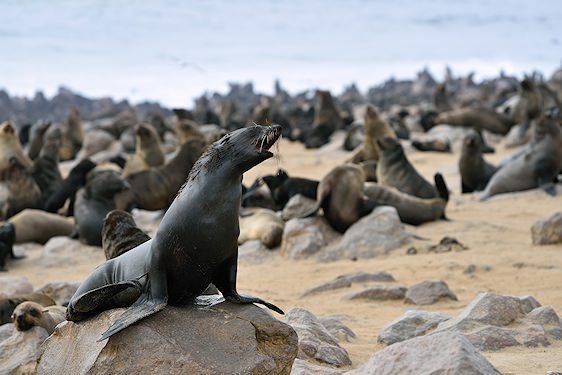
Cape Cross
Cape Cross lies on a small Atlantic headland and hosts one of the world’s largest Cape fur seal colonies—numbers can peak around the breeding season.
Swakopmund Travel Overview
The interior of Namibia bakes in summer, making the coast a popular December escape with cool mornings and evenings. Swakopmund offers easy access to beaches, dunes, and lagoon systems, all close to town.

The town is served by Swakopmund Airport and sits on the B2 road and Trans-Namib Railway linking Windhoek and Walvis Bay. Historic landmarks include the Altes Gefängnis (1909, Heinrich Bause) and the Woermannhaus (1906) with its tower, now a public library.
Recommended Accommodation
Swakopmund offers a choice of accommodations ranging from guest houses and hotels to lodges in the surrounding desert.
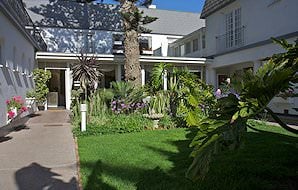
Hansa Hotel
Hansa Hotel, with its German character, is the oldest hotel in Namibia and offers a comfortable stay in the country’s most popular coastal town.
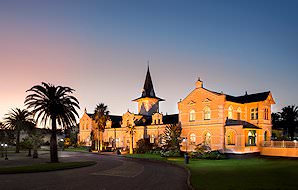
Swakopmund Hotel
The Swakopmund Hotel blends with the restored 1901 railway station, which anchors the property’s public areas.
Reasons to visit Swakopmund
Fishing frenzy
The Atlantic coast is famed for shore and boat angling, with seasonal shark fishing among the challenges. Fishing is strictly catch and release, and permits are required.
Blast from the Past
The Swakopmund Museum (founded in 1951 by Dr. Alfons Weber) documents colonial history and indigenous cultures and remains Namibia’s largest privately run museum.
Location, Location, Location
Swakopmund is a gateway to Henties Bay to the north, the haunting beauty of the Skeleton Coast, and the Sandwich Harbour wetlands south of Walvis Bay.
Experiences to be Savored in Swakopmund
Experiences in Swakopmund blend the town’s German colonial time warp with the nearby lagoons and bays. Expect something genuinely different in this remote coastal outpost.
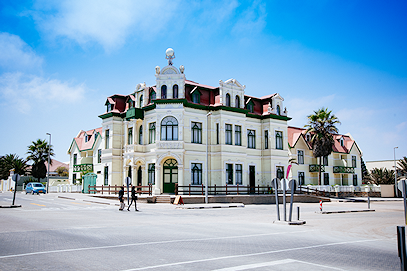
Architecture
The town preserves numerous buildings dating back to the late 19th and early 20th centuries, giving Swakopmund a distinctive old-world feel.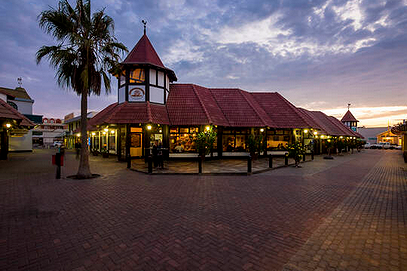
Swakopmund Brauhaus
When you enter the Brauhaus Bar & Restaurant, you step into a nostalgic setting. Enjoy a Hansa, Tafel, or Windhoek lager, or try classics like Wiener schnitzel, Eisbein, or regional game.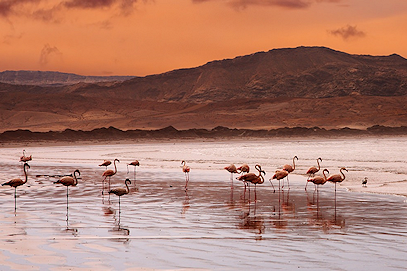
Flamingo Festivities
A short drive to Walvis Bay offers seasonal spectacles of greater and lesser flamingos at the lagoon, where vast numbers of migrant birds gather.Best Private Tours & Safari Packages
From the Fish River Canyon in the south to Etosha National Park in the north, this private tour includes a visit to Swakopmund.
This guided private tour combines Swakopmund with other highlights in northern Namibia.
Book a vacation package that explores the Skeleton Coast—remote, raw, and unforgettable.
Swakopmund Vacation Options and Travel Tips
Many of African Sky’s longer Namibia itineraries include Swakopmund. We can also tailor-make a package to include this distinctive coastal town.
Useful Information
History
Swakopmund was founded in 1892 as the main harbor of German South-West Africa. The harbor was officially established on 8 August when the gunboat Hyäne crew planted two beacons on the beach. The town name derives from the Swakop River—literally the mouth of the Swakop. The original breakwater silted quickly; in 1905 engineers built a wooden jetty. It also proved inadequate, and by 1914 work began on a steel jetty, later a pedestrian walkway. Historic buildings erected by trading and shipping companies remain. In 1915, Walvis Bay assumed the role of main port, and Swakopmund transitioned into today’s holiday town.
Wildlife
The most abundant coastal mammal is the Cape fur seal. Cape Cross Seal Reserve, about 120 km north, hosts the world’s largest Cape fur seal colony, with numbers peaking during the breeding season. The rich fishing grounds of the Benguela Current support these colonies. Desert tours reveal remarkable desert-adapted species, including the Namib “Little Five”: Namaqua chameleon, Peringuey’s adder (sidewinder), shovel-snouted lizard, web-footed (palmato) gecko, and the wheel (cartwheeling) spider. Birding is excellent, blending desert and coastal species. Endemics such as the Damara tern and dune lark are highlights, while both African flamingo species occur along the coast and at Walvis Bay Lagoon.
Vegetation & Terrain
The ephemeral Swakop River valley supports unusual plants in a hyper-arid landscape. The iconic Welwitschia mirabilis grows on mostly dry riverbanks and can live for centuries to millennia. Parts of the valley also support small-scale agriculture such as tomatoes.
Activities
Swakopmund is Namibia’s adventure capital as well as a gateway to ecologically significant seascapes like Walvis Bay Lagoon, where vast numbers of migrant birds gather seasonally. Adventure seekers can try quad biking on nearby dunes, or sandboarding and dune-skiing. When it warms up, head out by boat or kayak from Walvis Bay to look for dolphins and seals (whales are seasonal visitors; orcas are occasional). The town-edge dunes host desert-adapted creatures, and guided walks or 4×4 drives reveal their hidden world.

